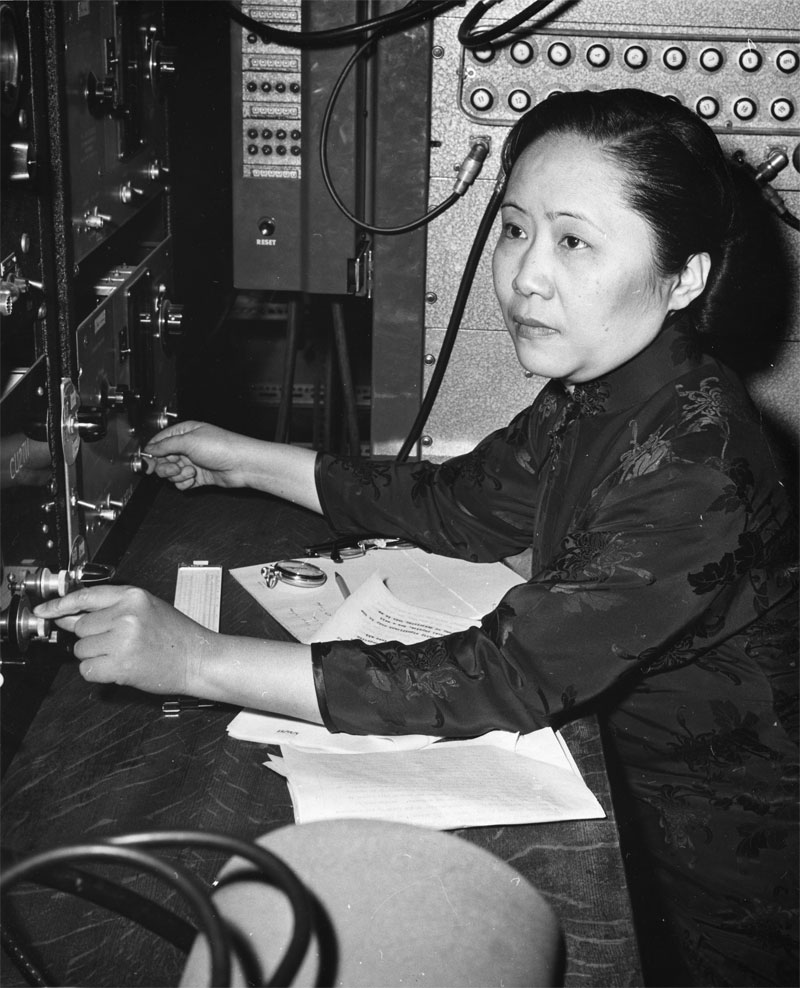Landmarks—Breaking the Mirror
APS has put the entire Physical Review archive online, back to 1893. Focus Landmarks feature important papers from the archive.
Symmetry is a cherished principle in theoretical physics. For example, the mirror reflection of any physical process appears to operate according to the same laws as its real-world counterpart. So it was a huge surprise in the 1950s when researchers showed in the Physical Review that mirror symmetry doesn’t always apply. They found that reactions involving the weak nuclear force, such as the radioactive decay of cobalt-60, can violate parity conservation, as the mirror symmetry is known. The discovery marked the abrupt introduction of symmetry breaking into fundamental physics.
The possibility that the weak interaction, which governs radioactive beta decay and other particle decays, might violate parity conservation was not taken seriously until Tsung-Dao Lee of Columbia University and Chen-Ning Yang of Brookhaven National Laboratory carefully examined the evidence. They reported in October 1956 in the Physical Review that parity violations in strong or electromagnetic interactions would be readily apparent in past experimental data and could therefore be ruled out. But for the weak interaction, the available data left the question open. They also noted, as had others, that parity violation might resolve the so-called tau-theta puzzle. The tau and the theta were two recently discovered particles, with seemingly identical mass and lifetime, that decayed into distinct sets of particles with opposite parity, or mirror-reflection properties. If the weak interaction didn’t conserve parity, the tau and the theta could be the same particle decaying in different ways. So Lee and Yang proposed some experimental tests that would settle the matter.
One proposal was to take a radioactive nucleus such as cobalt-60, which has a magnetic moment that can be aligned by a magnetic field, and look for an asymmetry in the direction in which decay electrons are emitted. With the cobalt magnetic axis vertical, more electrons emerging upward rather than downward, say, would be a sign of parity violation, Lee and Yang showed [1].
Chien-Shiung Wu of Columbia, who had given Lee and Yang some early guidance on their search through the existing data, tried this experiment. Because maintaining the magnetic alignment of the cobalt atoms required very low temperatures, Wu worked with scientists at the National Bureau of Standards in Washington, D.C., to place a thin, cobalt-containing crystal, along with detectors, inside a cryostat. By the end of 1956 she and her team were finding a large asymmetry.
Meanwhile, Leon Lederman, at Columbia’s Nevis Cyclotron Laboratory, had learned from Lee and Yang of an alternative experimental test that involved measuring the pattern of electrons produced by the decay of muons that themselves resulted from the decay of cyclotron-generated pions. Parity violation is needed in both the pion and muon decays to yield an observable asymmetry, and Lederman says that he originally thought the effect would be too small to see. But when he heard that Wu had found a large effect, he teamed up with his colleague Richard Garwin and graduate student Marcel Weinrich. Over the course of a weekend in January 1957, they ran an experiment that produced clear evidence of parity violation.
The startling news got out quickly, but Wu was not yet ready to publish. “Garwin and I waited a very painful week until Wu had made her last tests,” says Lederman, and the two experimental papers appeared back to back in the Physical Review. “Wu’s private communication was the key to our rapid success,” he adds.
Acting with untypical speed, the Nobel committee awarded Lee and Yang the 1957 physics prize. Physicists quickly absorbed the shock of finding that so basic a principle was not in fact universally true, and symmetry breaking in many forms is now an indispensable ingredient in theories of particle physics.
–David Lindley
David Lindley is a freelance science writer, now retired. His most recent book is The Dream Universe: How Fundamental Physics Lost Its Way (Penguin Random House, 2020).
References
- The magnetism of the nuclei can be thought of as resulting from their spin. With the nuclei aligned with their north poles pointing up, the mirror image would reverse their spin and cause the north poles to point down. But upward-emitted electrons will still move upward in the mirror. So if the decay respected mirror symmetry, electrons should be equally likely to be emitted upwards as downwards





